NiteOwl
Pack Dog
- Joined
- Dec 31, 2012
- Messages
- 98
- Reaction score
- 0
- Location
- Office Adventurer
- Bike
- Honda XRV 750 Africa Twin
A significant part of the earth’s oxygen gets replenished from carbon dioxide in the rainforests along the equator. For every person on our planet there are currently more than 400 trees, but they are disappearing - part of the price paid for relentless economic development. As a result, carbon dioxide is accumulating in the atmosphere and we are experiencing the effects of global warming causing increasing swings in the world’s weather. With even Cape Town experiencing a severe drought in 2017/18, what is happening to the equatorial rainforests in Africa?
We’ve been up the east coast of Africa to Zanzibar, but no further than Kaokoland along the west coast. We haven’t seen Angola at all, and never crossed the equator by road, but we’re not spring chickens anymore. Then I came across this at a local dealer and started to contemplate the possibilities.
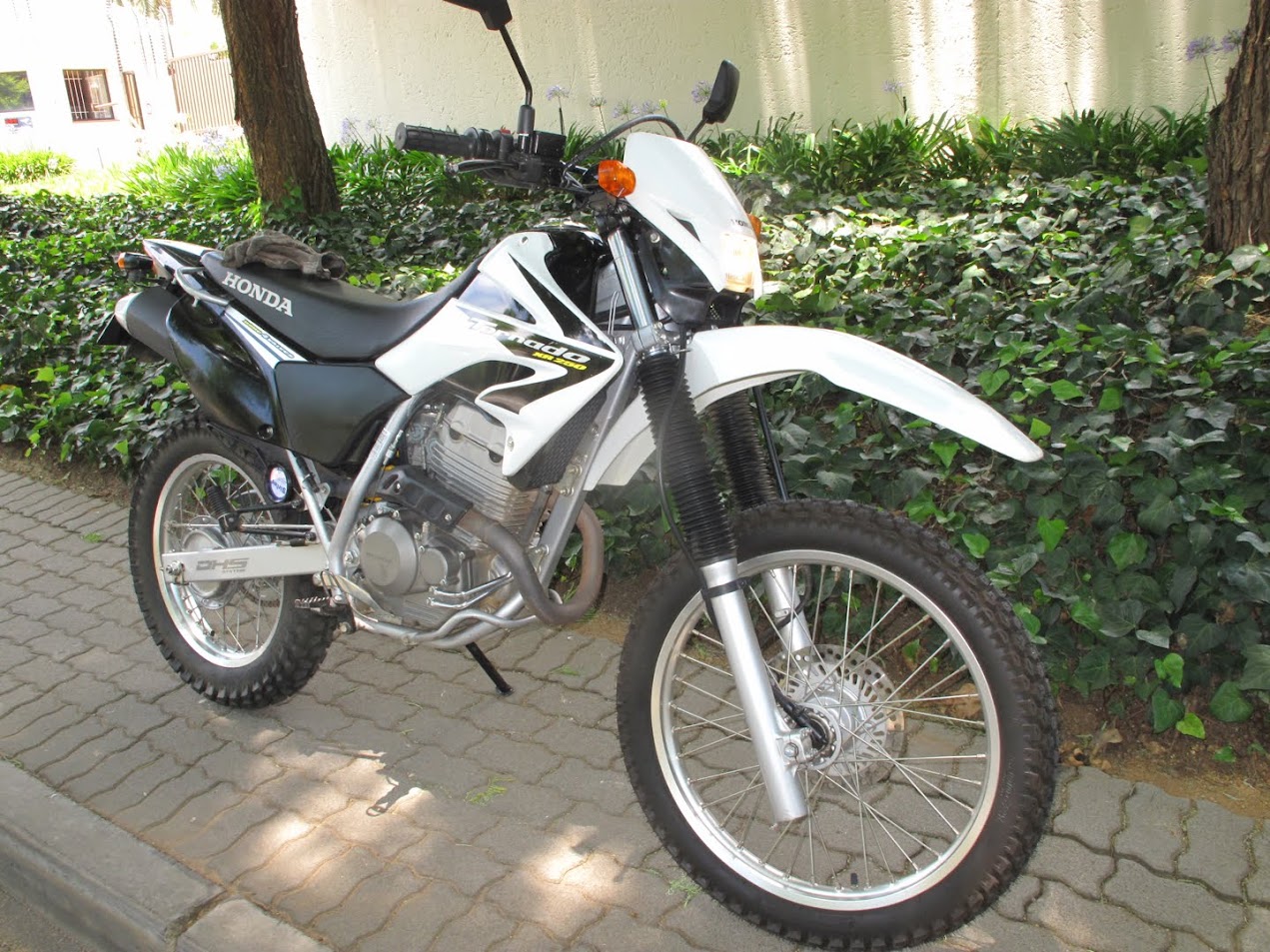
A few Voetspore episodes later a route northwards began to take shape and gradually the dream became a reality.
With a lightweight bike everything changes: they are cheaper to maintain, have lower fuel consumption (even without fuel injection), less tyre wear, are easier to manoeuvre, easier to pick up and still have enough capacity to carry our usual kit. After a few months of commuting on it, I started looking for another Tornado. For mrs Owl.

April found me queuing for a new passport at the Department of Home Affairs (DHA) offices. According to their website, it takes 10 working days to produce one.
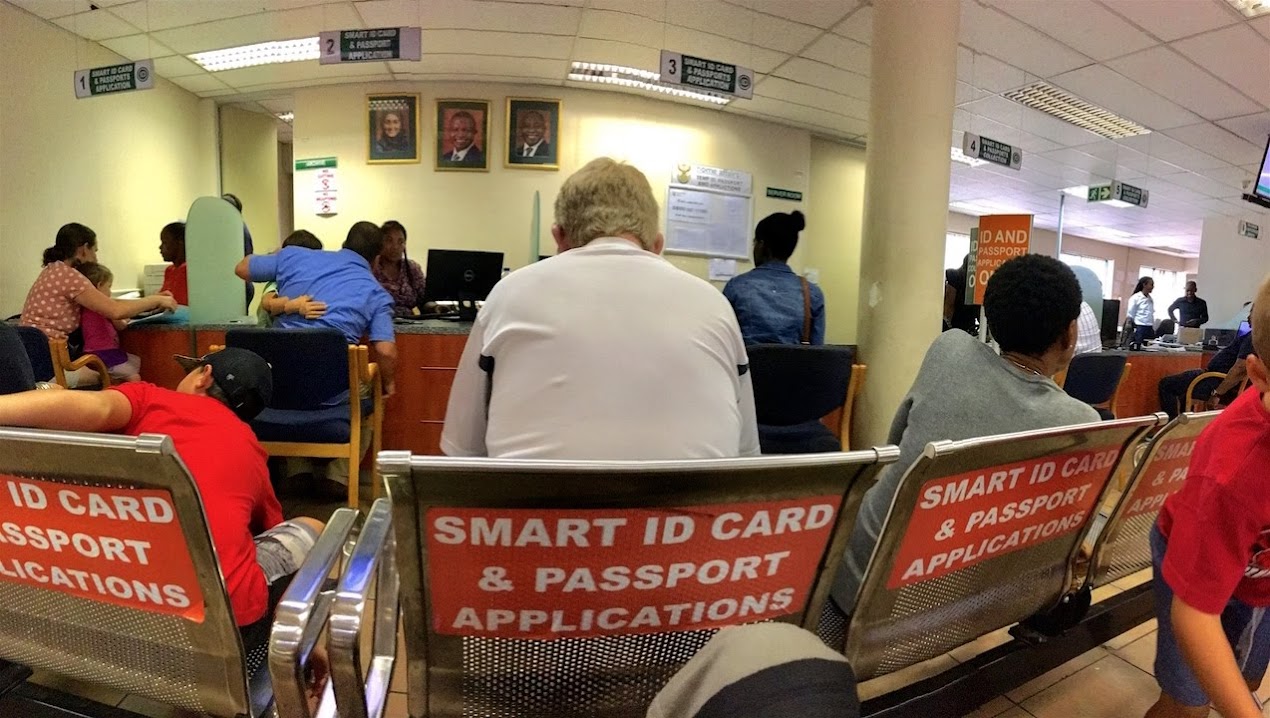
With the general disdain that most South Africans have for their public service, one would be sceptical to believe this claim, but within two weeks we both actually did have brand new passports and could apply for the necessary visas. For this:

Not many people seem to visit the Congo rainforests and their inhabitants, and even Lonely Planet is rather taciturn on the region (Angola merits only two pages in the Africa edition). Hopefully we can assist in expanding the knowledge base a bit.
In the relentless quest for resources, the habitat of many animals living in this region is disappearing, endangering the very existence of those that have survived the civil wars so endemic to these countries. Even South Africa has not escaped this malaise – it just happened two centuries earlier and has been papered over by the development of game reserves and private game farms (we are the leading export country of CITES-listed trophy items). So maybe we can see some endangered wildlife north of the border before it’s all gone.

We’ve done the bosveld route through Limpopo many times before. As this is still the start of the trip, it’s an opportunity to sort out the packing of our stuff, shake down the mods on the bikes, the new equipment (we got new intercoms that are not properly fitted in our helmets yet) and hopefully improve the fuel consumption. It doesn’t start too well with mrs Owl’s Tornado running dry a few km before Vaalwater, with just over 200km on the odo. Oops- with that kind of range we may need those jerrycans more than we would like.
The target is to get into Botswana before nightfall, and with about 6000km to go, there is every reason to get to the border as quickly as possible. After turning off the N1, we stick to the tar as the Waterberge loom large in front of us.
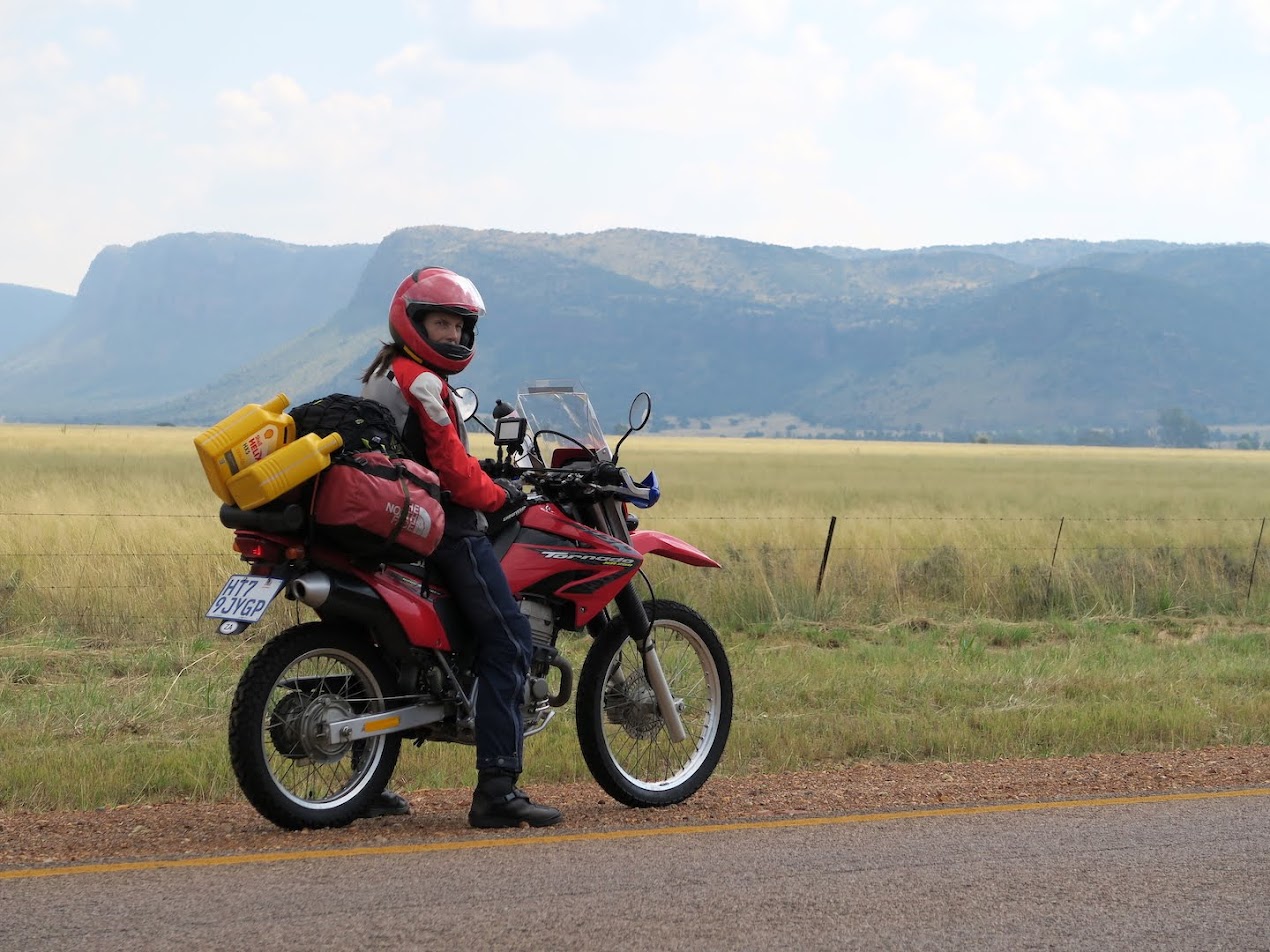
Ellisras (Lephalale) passes under our wheels after crossing the Mokolo river, from where the road roughly follows the path of what is now the Limpopo river near the Groblersbrug/ Martin’s Drift border post (can anyone explain why we have FIFTEEN border posts with Botswana and only ONE with Zimbabwe ??). Electioneering is in full swing, but unfortunately we won’t be able to participate this time around:
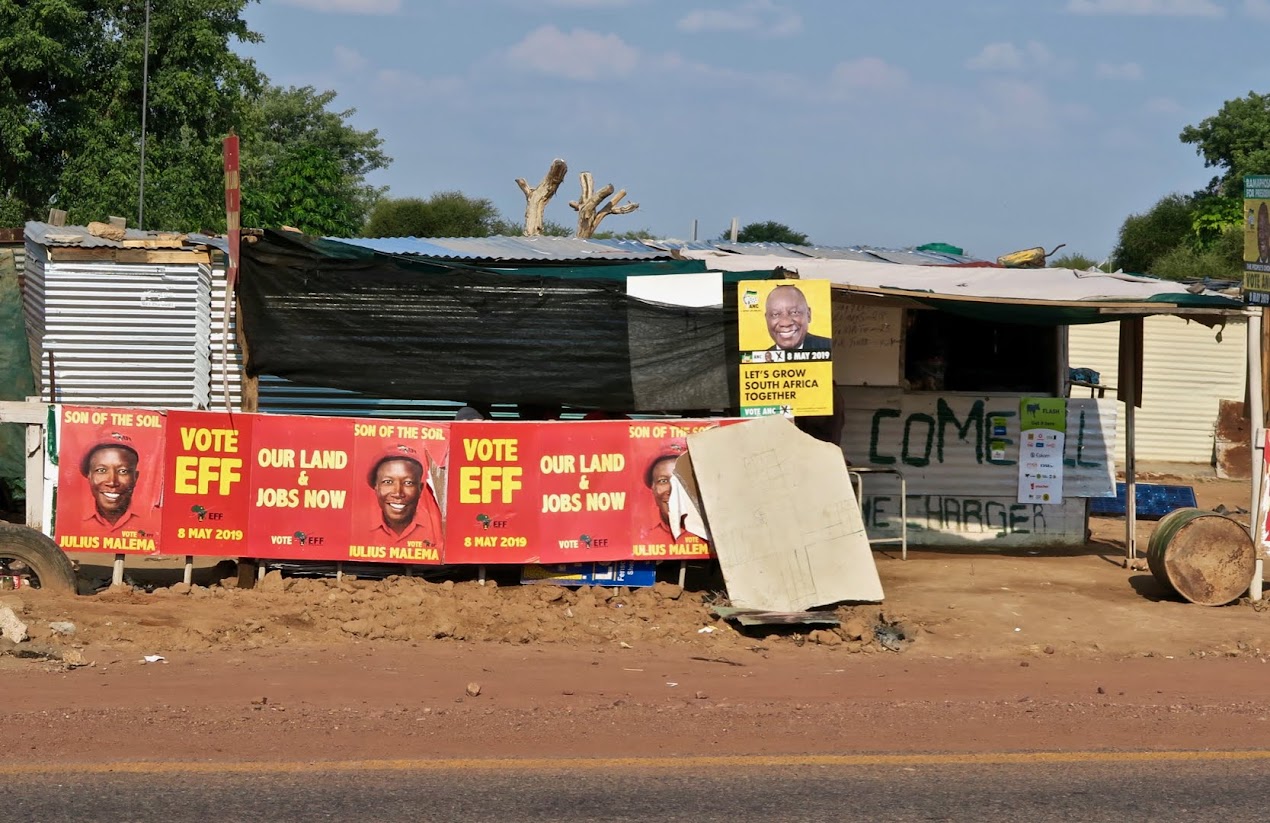
Thirty kilometres out of town we cross the Tropic of Capricorn before turning north through the Waterberg coalfield:
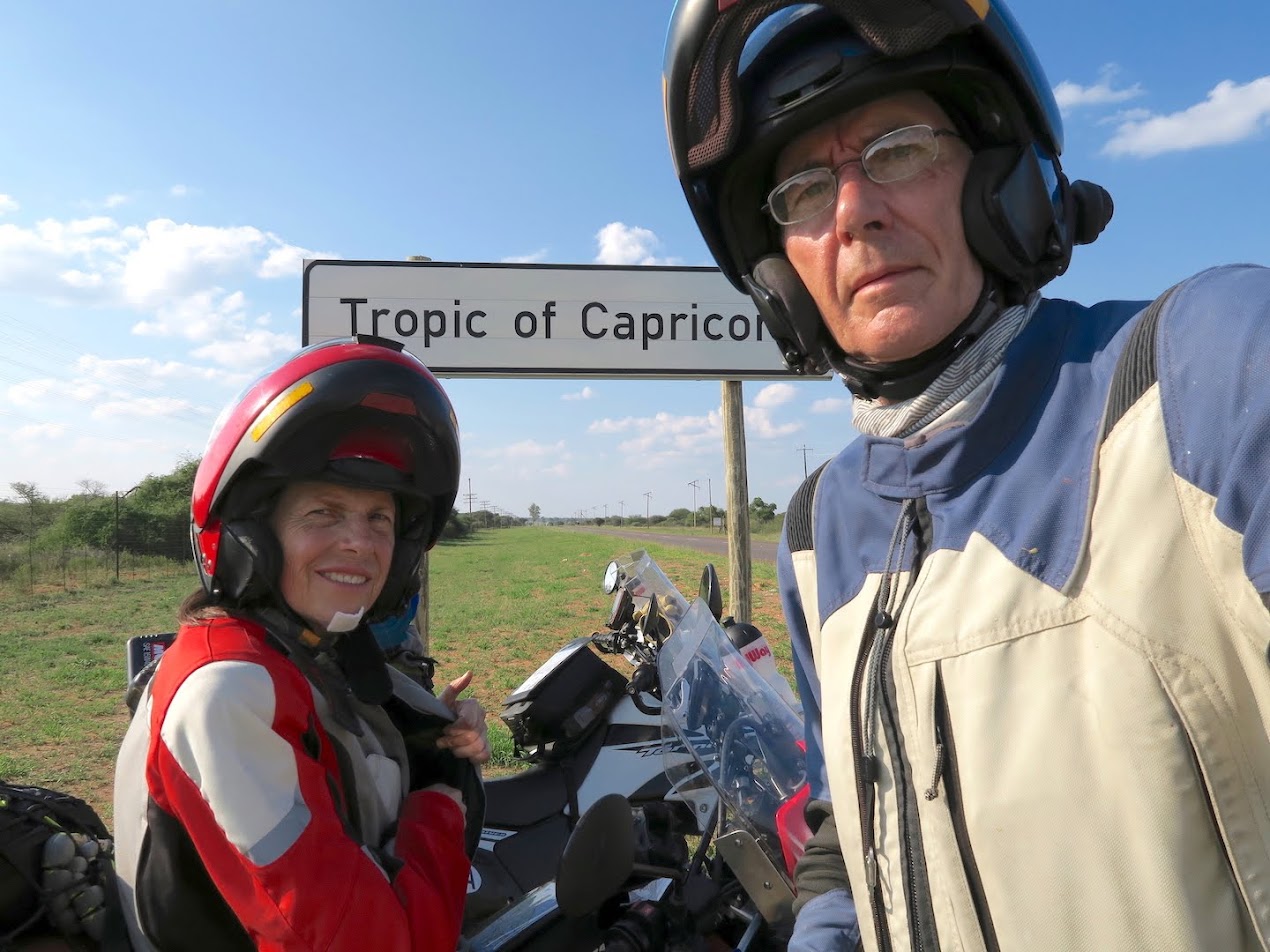
Much of the region around Ellisras is game farming country (despite fact that Eskom is building the Medupi power station here, which will use all the current surplus water from the Mokolo Dam), and every now and then you can spot the animals from the road, like these sable antelope.
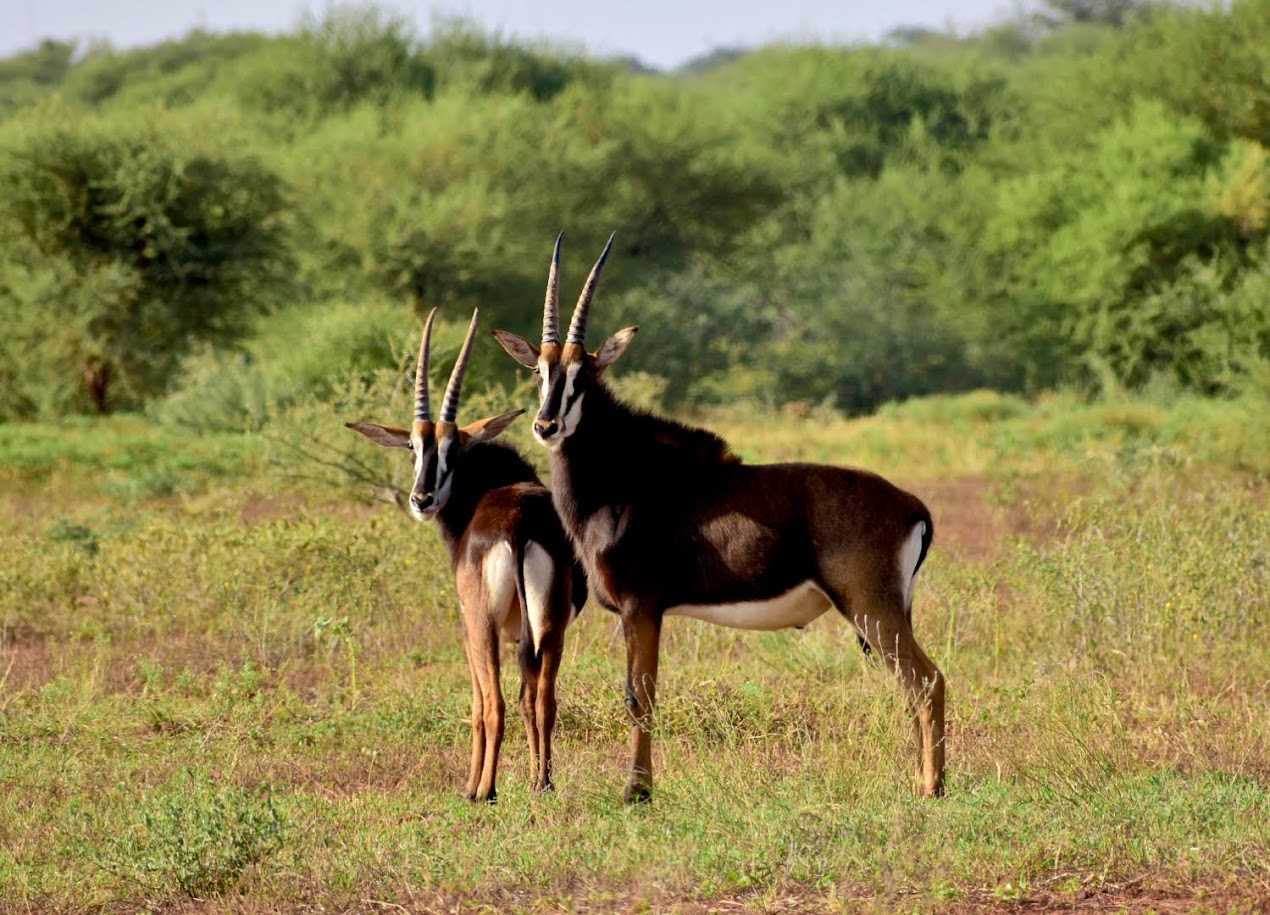
An hour or so later it is time for a final refuel before exchanging the green grass of home for our neighbour’s donkeys. We make a few last phone calls and send some messages before crossing the Limpopo to perform the usual foot & mouth disease ritual in Botswana, in the dark.
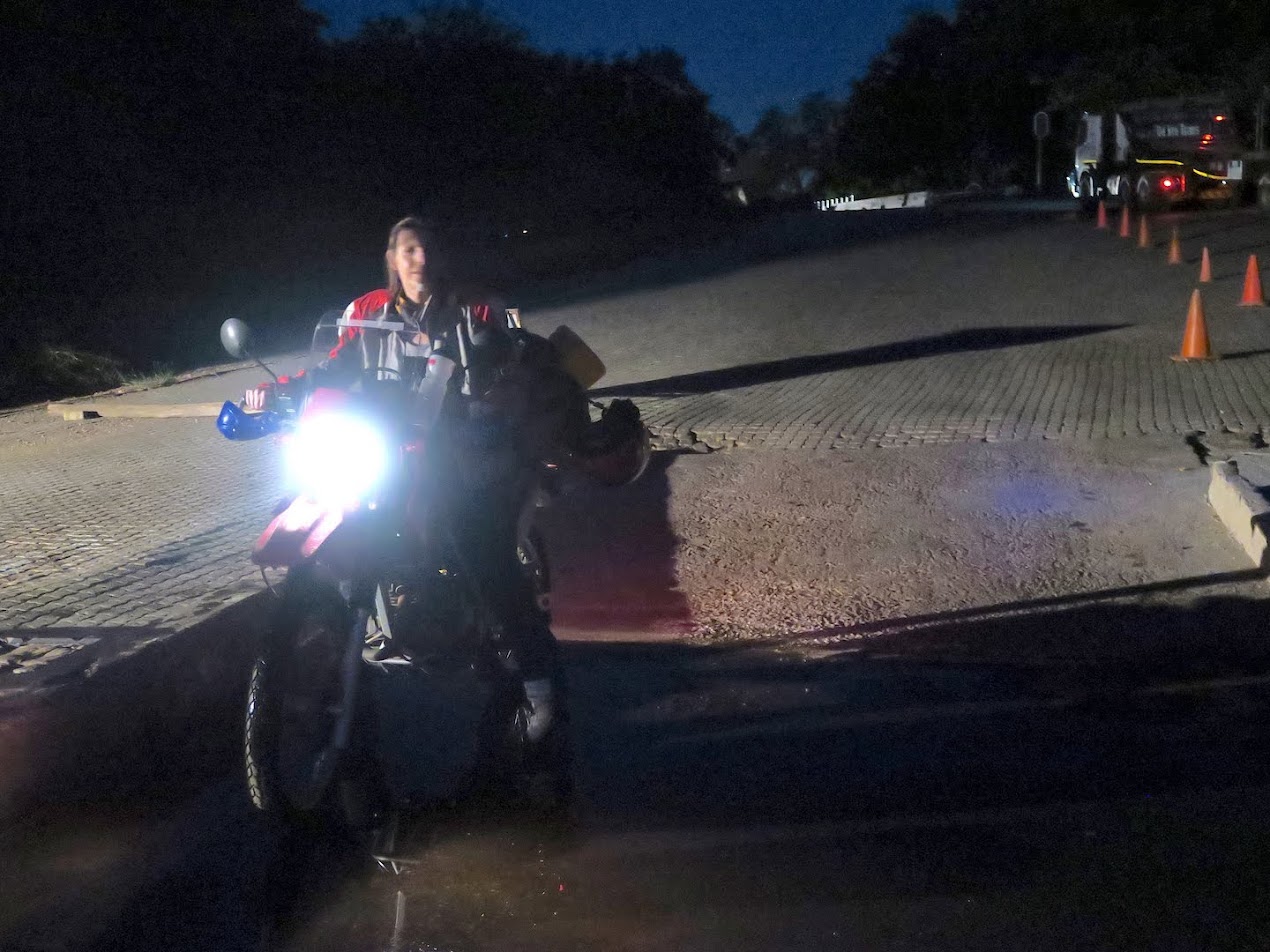
The current rate for a TIP (Temporary Import Permit) is now R217 (even for a small bike!), but formalities are reasonably efficient and by 19H00 we are off on the last stretch to Kwa Nokeng. After paying for camping, our Pulas don’t quite cover two P165 buffet dinner fees, so we share a (big) plate. It has been a long day after the usual rush of last-minute activities that went before it, so we turn in early. Gradually the distant roar of the trucks coming to and from the border fade away in the distance.
We’ve been up the east coast of Africa to Zanzibar, but no further than Kaokoland along the west coast. We haven’t seen Angola at all, and never crossed the equator by road, but we’re not spring chickens anymore. Then I came across this at a local dealer and started to contemplate the possibilities.
A few Voetspore episodes later a route northwards began to take shape and gradually the dream became a reality.
With a lightweight bike everything changes: they are cheaper to maintain, have lower fuel consumption (even without fuel injection), less tyre wear, are easier to manoeuvre, easier to pick up and still have enough capacity to carry our usual kit. After a few months of commuting on it, I started looking for another Tornado. For mrs Owl.
April found me queuing for a new passport at the Department of Home Affairs (DHA) offices. According to their website, it takes 10 working days to produce one.
With the general disdain that most South Africans have for their public service, one would be sceptical to believe this claim, but within two weeks we both actually did have brand new passports and could apply for the necessary visas. For this:
Not many people seem to visit the Congo rainforests and their inhabitants, and even Lonely Planet is rather taciturn on the region (Angola merits only two pages in the Africa edition). Hopefully we can assist in expanding the knowledge base a bit.
In the relentless quest for resources, the habitat of many animals living in this region is disappearing, endangering the very existence of those that have survived the civil wars so endemic to these countries. Even South Africa has not escaped this malaise – it just happened two centuries earlier and has been papered over by the development of game reserves and private game farms (we are the leading export country of CITES-listed trophy items). So maybe we can see some endangered wildlife north of the border before it’s all gone.
We’ve done the bosveld route through Limpopo many times before. As this is still the start of the trip, it’s an opportunity to sort out the packing of our stuff, shake down the mods on the bikes, the new equipment (we got new intercoms that are not properly fitted in our helmets yet) and hopefully improve the fuel consumption. It doesn’t start too well with mrs Owl’s Tornado running dry a few km before Vaalwater, with just over 200km on the odo. Oops- with that kind of range we may need those jerrycans more than we would like.
The target is to get into Botswana before nightfall, and with about 6000km to go, there is every reason to get to the border as quickly as possible. After turning off the N1, we stick to the tar as the Waterberge loom large in front of us.
Ellisras (Lephalale) passes under our wheels after crossing the Mokolo river, from where the road roughly follows the path of what is now the Limpopo river near the Groblersbrug/ Martin’s Drift border post (can anyone explain why we have FIFTEEN border posts with Botswana and only ONE with Zimbabwe ??). Electioneering is in full swing, but unfortunately we won’t be able to participate this time around:
Thirty kilometres out of town we cross the Tropic of Capricorn before turning north through the Waterberg coalfield:
Much of the region around Ellisras is game farming country (despite fact that Eskom is building the Medupi power station here, which will use all the current surplus water from the Mokolo Dam), and every now and then you can spot the animals from the road, like these sable antelope.
An hour or so later it is time for a final refuel before exchanging the green grass of home for our neighbour’s donkeys. We make a few last phone calls and send some messages before crossing the Limpopo to perform the usual foot & mouth disease ritual in Botswana, in the dark.
The current rate for a TIP (Temporary Import Permit) is now R217 (even for a small bike!), but formalities are reasonably efficient and by 19H00 we are off on the last stretch to Kwa Nokeng. After paying for camping, our Pulas don’t quite cover two P165 buffet dinner fees, so we share a (big) plate. It has been a long day after the usual rush of last-minute activities that went before it, so we turn in early. Gradually the distant roar of the trucks coming to and from the border fade away in the distance.




